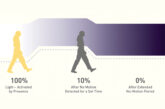
Kirsty Johnson MIET, Technical Director at Surge Protection Devices, answers some of the common queries around the use of SPDs following Amendment 2 to the 18th Edition Wiring Regulations.
Since the release of the 18th Edition there has been an increase in the use of Surge Protection Devices, and this is only growing with the additional requirements in Amendment 2. As always with a new subject matter, there are a few frequently asked questions that I hope to cover in this article:
Q. Will an SPD need replacing after every surge?
No, an SPD is designed to take multiple surges and internally reset after each over voltage. An SPD will only need changing at the end of its life (the warranty is manufacturer dependent) and this will be shown in the status indication on the front of the unit.
Q. When do I need to use a Type 1?
With the increase in availability of consumer units with the SPD already installed, it is becoming more of a consideration as to whether this is the correct device. A Type 1 will be needed in a domestic installation, if the property is supplied via an overhead cable. Outside of domestic installations, a Type 1 device will also be required if the structure has an external lightning protection system.
Q. Why do some manufacturers need an MCB (Miniature Circuit Breaker) before the SPD?
According to BS 7671, all SPDs shall be protected from over current, which can be done through the use of an MCB or internal fuse. As a company, we specify the use of MCBs with all of our devices. The MCB will provide a back-up in case of a failure within the SPD, while also protecting the cable and giving a point of isolation for the SPD.
Q. How do I measure the cable lengths to ensure I meet the BS 7671 requirements?
If the SPD is installed within the consumer unit, cable lengths will automatically be suitable. When installing outside of a consumer unit, you must ensure that all cables combined are less than 1m in length. Length A will be from where you take your live supply to the MCB (this is ‘0’if the MCB is on the busbar), Length B is from the MCB to the SPD and Length C is from the SPD to the closest earth point(not the MET). For a more detailed explanation of this, please look at the installation guide available on our website.
Q. Will an SPD installed in the consumer unit protect the whole domestic property?
An SPD in the consumer unit will massively reduce the risk of any internal damage within the electrical installation from over voltage coming from the mains supply. Obviously, there are other routes of entry into the electrical system, via aerials, telephone lines or any external cables, but there is no requirement in BS 7671 to protect these routes.
Q. Do I need to install Type 3 devices in a domestic installation?
There is no requirement to use Type 3 devices. The Type 2 on the consumer unit provides an enhanced level of voltage protection for the installation. Type 3 devices would only be used in specific specialist circumstances.
If you have any questions that I haven’t covered in this article, or would like any specific help with a project or installation, please contact me directly at: kirsty@surgedevices.co.uk
To browse the Surge Protection Installation Guide, click here








